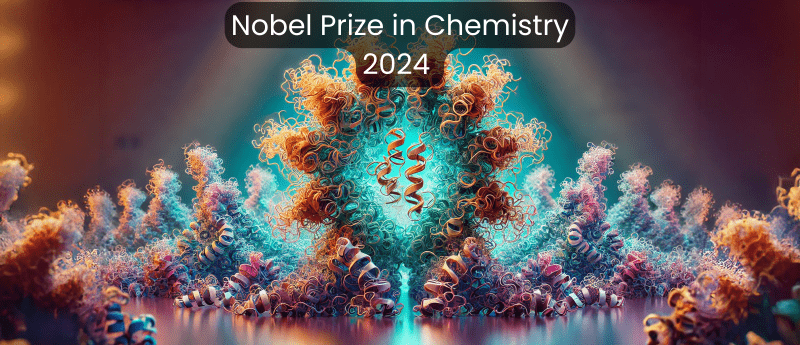Nobel Prize in Chemistry 2024 Recognizes Groundbreaking Advances in Protein Design and Structure Prediction

The Royal Swedish Academy of Sciences has awarded the 2024 Nobel Prize in Chemistry to three scientists whose revolutionary discoveries have reshaped our understanding of proteins, the fundamental building blocks of life. David Baker, from the University of Washington, is recognized for his work in computational protein design, while Demis Hassabis and John M. Jumper, both from Google DeepMind, are honored for their success in predicting protein structures using AI.
Proteins, often described as nature’s molecular machines, are crucial to every aspect of life, from controlling chemical reactions to forming the structures of cells. Predicting and designing these molecular tools has long been considered one of biology’s most elusive goals—one that the 2024 Nobel laureates have decisively advanced.
Building Novel Proteins: David Baker’s Pioneering Work
David Baker’s journey began with a simple yet ambitious goal: to create new proteins from scratch—proteins that did not exist in nature. Using computational methods, Baker achieved what many considered impossible. In 2003, his research group developed the first entirely new protein, known as Top7, designed to possess a structure unlike any naturally occurring protein. His program, Rosetta, enabled scientists to explore protein design with unparalleled creativity, leading to applications in pharmaceuticals, vaccines, and even materials science.
Baker’s work on computational protein design has since yielded a series of stunning innovations. His lab has designed proteins that act as molecular sensors, vaccines with influenza-like particles, and new materials that self-assemble—all showcasing the virtually limitless potential of proteins when their structures can be precisely engineered.
Predicting Protein Structures: AlphaFold’s Breakthrough
While Baker focused on creating new proteins, Demis Hassabis and John Jumper aimed to solve a different aspect of the puzzle—predicting the complex three-dimensional structures of proteins from their amino acid sequences. This has been a fundamental challenge since the 1970s, with its solution deemed one of the “holy grails” of biology.
In 2020, Hassabis and Jumper unveiled AlphaFold2, an artificial intelligence model that could predict the structure of almost any protein with remarkable accuracy. Developed by DeepMind, AlphaFold2 cracked the 50-year-old problem that had stumped biologists: how to predict protein structures from their sequences, a task that, without sophisticated technology, would take researchers years to complete.
The impact of AlphaFold2 has been immediate and immense. The AI has been used by millions of scientists worldwide, from studying antibiotic resistance to developing enzymes that can break down plastic. By making the AI model publicly available, DeepMind opened up a treasure trove of data that is already fueling breakthroughs in healthcare and environmental science.
Google Deep Mind continues to push the frontier of computational biology with AlphaFold3, and more recently AlphaProteo.
Transforming the Future of Science and Medicine
This year’s Nobel Prize recognizes two seemingly separate but deeply interconnected achievements—the ability to build new proteins and the ability to accurately predict the structures of natural ones. Heiner Linke, Chair of the Nobel Committee for Chemistry, remarked, “These discoveries open up vast possibilities,” as they enable researchers to not only understand the diversity of life at a fundamental level but also create new molecular tools that may reshape medicine, environmental technologies, and beyond.
David Baker, Demis Hassabis, and John Jumper have shown that understanding proteins—life’s chemical workhorses—is not just about looking at what nature has given us, but about imagining and constructing entirely new possibilities. Their pioneering efforts mark a new era where proteins can be predicted, designed, and manipulated with precision, holding enormous potential for addressing some of the biggest challenges facing humanity.